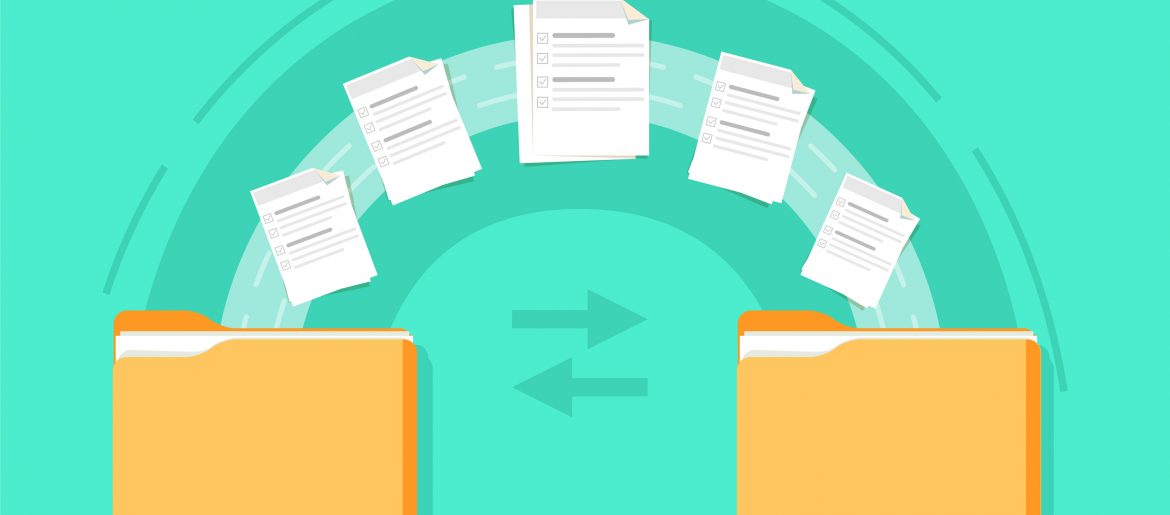
The cloud is now the standard for business computing and there are what seems like an endless number of cloud services to choose from. This can be an advantage. However, it can also have some drawbacks.
It is good to have multiple cloud tool options to ensure that you will find the perfect tools for your needs. However, all of those choices can also lead companies to “app hop” when they see a shiny new business app to try out.
Companies are now churning through approximately 30% of their cloud apps as they try them on for size and continually strive for more productivity and capabilities to help them grow.
This means that many businesses in Connecticut and beyond are going through some type of cloud app migration at some point each year.
When migrating data between platforms, things are never quite as easy as they may seem. Problems can occur that cause years of data to be lost and cause business disruptions for much longer than anticipated.
These problems can be especially pronounced in small businesses that try to handle data migration on their own. Even in larger enterprises, cloud migration can be a big challenge.
70% of executives and cloud technology managers stated that migrating cloud data is a major challenge.
If you have yet another app switch and data migration coming up on the horizon, study the common migration mistakes below to help ensure a smoother transition.
Avoid These Big Cloud Data Migration Mistakes
1. Not Backing Up All Data Before the Migration
Companies often make the mistake of just migrating their data over from one app to another and not backing it up first. They fall back on having the old account open for a few days in case anything goes wrong.
But what happens if a migration mistake is not found until a couple of weeks later? This can easily happen if another mistake is made (#2 below). By the time a mistake is found, the old account may have already been closed and the data has been wiped by the SaaS service which leaves you without a way to recover that data if there is no backup to fall back on.
2. Not Doing a Migration Validation First
Smaller businesses can easily make this mistake by trying to get through a data migration quickly and not following best practices (or simply because they don't know what they are).
Companies will migrate all of their data over at once without validating the migration setup first. Validating means to transfer just a small amount of data over as a test and then thoroughly checking each field to ensure that everything has transferred over successfully.
Doing the validation first before transferring over all of your data can save time and reduce the risk of a major migration problem.
3. Dumping All Data in One Place in an All-in-One Platform
When you are moving to an all-in-one platform, such as Microsoft 365, there are different ways to properly store your data so it is used according to the most productive practices.
However, companies often will not take the time to come up with a detailed migration strategy and will dump all the data into one application instead (like OneDrive) which leaves the others underutilized (like Teams and SharePoint).
This means that they are only getting a fraction of the efficiency that they could be getting if they had migrated their data more effectively.
4. Not Deleting or Archiving Data Before a Transfer
If you have been using a tool (like a cloud storage tool) for awhile, there is a good chance that there are old files in there that are never used. They might be “version 2.5” of a document that is on version 6 or older files that are rarely ever accessed.
Companies that don’t take the time to go through their data first before doing a cloud migration end up moving over that unused data and having it just get in the way. It makes it harder for users to find the files that they need and drags down productivity.
5. Not Moving Over Automations or Security Settings
Not all data being moved between cloud platforms is in the form of records or files and folders. Data is also within automations, workflows and security settings that may have been set up in a platform to optimize it over the years.
Businesses often make the mistake of only focusing on records and files when doing a migration and forget about those customizations. This can leave them going backwards in productivity when the new app doesn’t have the same improvements and efficiencies that they had built in.
Work With Sound Computers to Ensure a Smooth Cloud Migration
Sound Computers can handle all of the migration heavy lifting for your Connecticut business to reduce downtime during a migration and get all your information and optimizations transitioned successfully.
Contact us today to schedule a free consultation. Call 860-577-8060 or reach us online.
